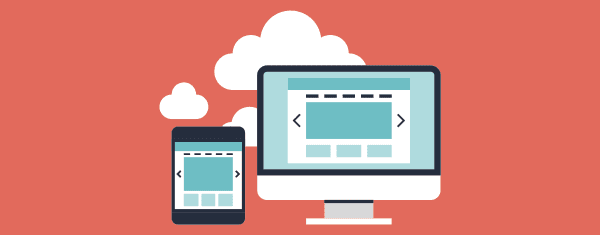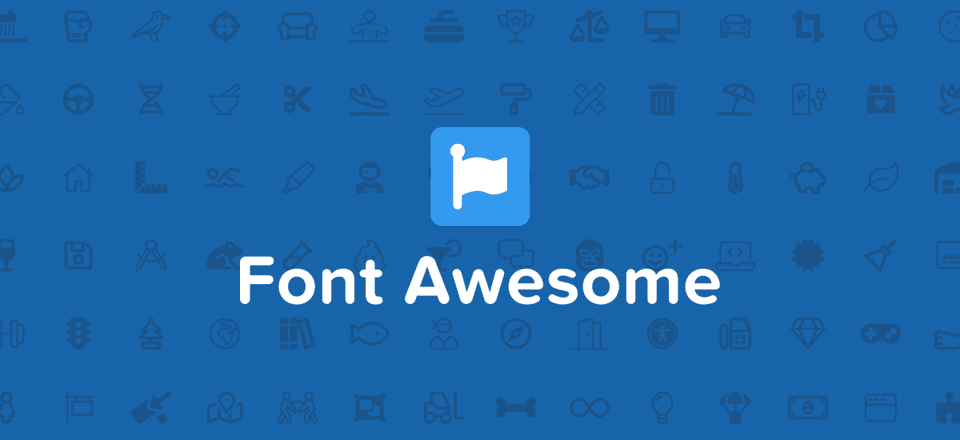So you finally took the plunge. You studied like crazy, gained a lot of work experience, crafted a stunning portfolio and began to offer your services as a web designer, but the clients aren’t quite lining up yet and a lot of the ones that do contact you end up walking away – often citing a nephew who can do the job for free – while you’re left wondering why you didn’t study accounting like your parents suggested.
While the situation may seem daunting, it doesn’t mean it’s time to shelve away your laptop and uninstall SublimeText. Even the most talented of web designers need to market themselves sometimes if they want to keep the work flowing in, and offering fixed-price web design packages is one of the easiest ways to bring in new customers.
However, this marketing strategy should not be put into action without forethought. A poorly-conceived list of packages – promising lots of features and enticingly low prices – could have you drowning in a sea of bad projects. You need to sit down and ask yourself, is this the right move for my business?
3 Reasons to Offer Web Design Packages
1. Removing Budgetary Doubts From the Equation
While big companies and people familiar with the intricacies of web design may understand the need for consultations before settling on a price for your work, a lot of customers with simpler needs get cold feet when they start imagining gigantic bills they can’t make heads nor tail of; they’re simply accustomed to seeing prices up front in big, bold letters.
Clear packages and pricing can help dispel a lot of the doubts customers have. They’ve essentially wandered into your restaurant – either through word or mouth or simply by chance – and it’s your job to hand them a menu and make sure they know what the best options are.
2. They Help You Weed Out the “Tire Kickers”
In car salesman lingo, a tire kicker is the kind of guy who comes around the lot often but never commits to any purchase and will happily take over your day with endless questions and low-ball offers.
Every web designer will have a tale or ten about these kinds of customers: it could be the guy who thinks he’s on the verge of founding the next Facebook – but all he’s got is $50 in his pocket – and you should be thankful for the opportunity to get in on the ground floor, or perhaps the small store owner who’s always asking you questions about your rates and keeps claiming he’ll contact you eventually, but “now is not the right time”.
Customers who are serious about their projects can appreciate being told exactly what their options are and what they’re paying for, which brings us to the next point.
3. Well-Defined Packages Help You Save Time and Money
Put a bunch of freelance web designers in a room and ask them what the most difficult part about dealing with clients is, and nine out of ten will tell you it always comes down to prices and expectations. Customers want to get the most bang for their buck (understandably) and will often ask for the Taj Majal on a tin house budget (not so easy to stomach); that’s where clear payment structures come to your aid.
A well-defined package will let the client know exactly what his money is buying: a set number of pages, responsive web design, mailing list setup, shopping carts, SEO, logo design – you name it. You need to think in general terms in order to achieve this; what do most clients really need to get their websites going? Every feature not included in the client’s chosen package should be paid as an extra and you should inform your customers about that fact before getting down to work in order to avoid misunderstandings down the road.
Less haggling about extras translates into more time actually working and clients with more realistic expectations about the scope of their projects.
3 Reasons Not To Offer Web Design Packages
1. Some Projects Require Custom Solutions
There’s no way around this one – certain projects simply can’t be shoehorned into a pre-made package with a set budget. Maybe the client is worried about scalability, insists on using a custom CMS (heaven forbid!), absolutely needs their site to be compatible with Internet Explorer 4, 5 and 6, or just wants everything to be ready five minutes after he’s signed the contract; either way, you certainly can’t afford to charge such projects the same prices as those clients who simply want a nice five-page brochure site.
While packages may bring in a constant influx of new customers, you still need to be open to private in-depth consultations for clients whose projects will require special attention.
2. Dealing With Custom Cases That Want Package Rates
If you’ve been working in web design for more than five minutes, you’ll be well-versed in the art of patiently explaining to clients exactly why their project costs what it does. That conversation usually goes a lot like this: “My going rate is $x per hour/day and I estimate this project should take y amount of time considering the features you want me to implement”. Some haggling may occur afterwards and a few clients will simply decide to walk away; that’s all business as usual.
However, throwing fixed prices into the mix will potentially prompt clients who need custom solutions to question why they’re not getting the same deals as everyone else. While a skilled developer can easily spot the nuances that differentiate each project, it’s important to remember that a lot of the people you’ll be dealing with don’t have the skillset to do so and will need to be guided through the pre-development stage.
3. Deceptively Complex Projects May Slip Through
While thousands of hours of web development experience may have honed your senses until you’re able to spot a poorly optimized website a mile away, eventually everyone slips up and accepts a project that just doesn’t seem that hard, only to discover how incredibly wrong they were when it’s too late to back out or renegotiate their rates.
This is doubly troublesome if the project in question is one of your package offerings, since they’re presumably priced just high enough to pay for your expertise, but still look like bargains to attract a wider variety of customers. Since packages are usually paid upfront – aside from extras – once the development is underway you might find yourself turning away more profitable work until you manage to crawl your way to the finish line.
Examples of Web Design Packages in the Wild

Below you will find two detailed examples that showcase real web design package offerings. We will go over each of them and analyze whether or not they’re well conceived, in order to provide you with a starting point should you be interested in putting together your own.
(For the sake of privacy, we won’t be mentioning the names of the companies that offer each package.)
Behind door number one we’ve got a small company that offers three different web design packages as well as custom consultations. Their three tiers are as follows:
1. Starter Website from $1,599
- Custom design including one revision after delivery
- Five pages (+ $75 for each additional page)
- Responsive web design, optimized for both mobile and tablets
- One email contact form (+ $75 for each additional form)
- Homepage slideshow with 6 pictures ($150 extra)
- Photo gallery with up to 24 pictures ($125 extra)
- Shopping cart (not included)
- Additional features upon request after consultation
2. Business Website from $2,899
- Custom design including two revision after delivery
- 15 website pages
- Custom CMS
- Responsive web design, optimized for both mobile and tablets.
- One email contact form (+ $50 for each additional form).
- Homepage slideshow with 6 pictures
- Photo galleries
- Shopping cart (+ $350 and an additional $25 per product)
- Additional features upon request after consultation
3. E-Commerce Website starting at $8,599
- Custom design including two revisions after delivery
- 20 website pages
- Custom CMS
- Responsive web design, optimized for both mobile and tablets.
- One email contact form (+ $50 for each additional form).
- Homepage slideshow with 6 pictures
- Photo galleries
- Shopping cart, payment processor and shipping integration included
- Additional features upon request after consultation
The above is a great example of a solid suite of web design packages. Let’s go over the reasons why:
- The company offers a small but comprehensive choice of tiers, making it easier for customers to pick which one suits them better.
- Popular extras are ear-marked right from the get go, removing doubts.
- The number of included pages is featured prominently.
- The basic tier makes a point of mentioning a feature that is not included within that package, which encourages customers to consider the successive – and more expensive – ones, which naturally yield greater returns to the business.
- Explicitly says that additional features can be added only after consultations, making it easy to determine which clients would be more suited to fully custom solutions.
Behind door number two there’s a prominent company that’s dedicated to providing hosting services but also offers customers web design solutions in two tiers:
1. Standard Website at $799
- A dedicated design coordinator
- A premium template from their collection
- Use of their custom CMS
- Up to 10 pages of content (additional pages can be purchased)
- Two revisions after delivery
2. E-Commerce Website at $1,099
- A dedicated design coordinator
- A premium template from their collection
- Use of their custom CMS
- Up to 10 pages of content (additional pages can be purchased)
- Up to 10 products added to your shop (additional product pages can be purchased)
- Integration of major payment and shipping methods
- Two revisions after delivery
Since this company’s main source of income is in another field, they offer web design packages as an afterthought in order to entice more sign-ups to their hosting packages. While they might not be a terrible choice for someone who just wants to get their site up and running as quickly as possible, they’re not a particularly good example to follow when it comes to crafting a good design package due to the following reasons:
- Both tiers are too general and barely list any of the features that are included in the prices.
- While a couple of extras are mentioned, their prices are nowhere to be seen.
- There’s no mention at all about consultations for additional features, which could confuse customers who don’t exactly know what they want.
Summary
Web design packages aren’t a good fit for every agency or freelance developer out there, but if you can handle the influx of clients and don’t mind the potential downsides, they might just be the thing you need to boost your business.
If you do decide to go down this route, keep in mind that you need to put some real effort into narrowing down which kinds of clients you want to target with your packages, the optimal price points for each one, defining the extras, etc., and when in doubt, it’s always safer to be as detailed as humanly possible.
Remember each new satisfied customer will be sure to talk you up to his or her friends, who might just end up fattening your client roster as well. If you think this might be a good fit for your business, there’s no better time than now to get started.
Images by Bloomua / shutterstock.com
Do you think web design packages are a viable business strategy? Let us know in the comments!









Good info about packages. All of my projects have been custom so far, and this definitely rang a bell: “Everyone slips up and accepts a project that just doesn’t seem that hard, only to discover how incredibly wrong they were when it’s too late to back out or renegotiate their rates.” Good to know that happens to everyone. For me, a problem with packages is that charging per page assumes the client already has it all together as to what they want on the page, and the designer just finesses it. But my experience is that most clients need a lot of handholding about the *content* for the pages—organizing/editing their info, formatting it for the web, optimizing graphics—and there’s always something (often a lot) “custom” that needs to be done to finish off the project professionally. But I’m a designer/brand builder, not a hosting company building websites on the side.
Web design is something that should be taken seriously. It is not all all about designing as the client may need your help at a later time even after you have completed the project.
One needs fast to understand the customer needs before quoting the price. There may be more than what you Expect.
The Sky is the Limit,
Anthony
Hi – thanks for the post, the pricing that you mentioned for each website like for basic plan you said we should charge $1,599, online service providers particularly from offshore countries like india and other asian countries create basic site for just 100 bucks, the pricing you listed is it for local design agency in usa ?
I agree with your post specially with the 3 cons of having packages.
Regards
Arfath
unfortunately for the 100 buck deals, you get what you pay for. Unless you know and trust the provider, don’t go for the cheapest. Good designers in SEAsia are not far off the prices given in this post.
100 Bucks in India sure does sound tempting. Really destroys profit.
If somebody is crazy enough to save a few bucks up front by exploiting the cheaper labor factor of having your site built in India, just let ’em go. But you can tell the person who dangles that ‘threat’ in front of you this:
“Saving a few bucks on a website built on the other side of Earth is like buying your shoes from Marshalls, instead of a store you trust to put your feet in the right shoes. If there’s something wrong with your site, you know where to find me, and I’ll be responsive. I need you to be a happy client for my own business to thrive. Do you really think at their price points they care about the individual client 15,000 miles away? They’re already onto the next clown.”
A $100 site sounds like a $100 car to me. That’s appealing? Good luck with that one from each and every angle!
Thanks for this great write up on packages. I’ve been advised not to post prices, but I think they are important to consumers.
Perfect timing for this article! I’m currently setting up packages that cover everything associated with websites other than the website design itself, as this is often needs to be looked at individually.
I don’t think setting up website design packages are for me personally like you mentioned, but certainly maintenance, social media, SEO and email marketing can easily be packaged up so you can sell your services better.
We mix the two solutions. 3 standard quotation (Base, Plus and eCommerce). But we also offer customized quotation for specific requests.
I find that web design projects are not often turn-key, and always have a custom piece. Some clients want hosting and domain support, while others want ongoing content updates or general technology support.
I find it best to offer a simple design package, and then let them know that you offer additional services so you can take care of all of their needs. Once you get a client, tailoring monthly maintenance packages to their needs is a great way to keep them while building trust.
Great article, and the opening scenario is one that I’ve been going through. I recently got my degree in web design and am trying to get started in this field as a side income. So far I’ve done several practice sites for my portfolio and a few sites for relatives just to get some experience. Since I’m just starting out and still learning, I don’t feel like I can charge $3,000 just yet. I had a chance to get a few paying clients that I agreed to do for around $300-$400 (even though they were worth a lot more) just to get the experience and something on my portfolio, and at the last minute before meeting to finalize the details, they pulled out, stating that they knew of someone (a nephew and a friend) who would do it for free for them. I’m like “really?” Even though I tried to explain to them that what I will do for them will look a hell of a lot better than something done on Wix, they didn’t seem to care, and thought that the free site will be good enough. Pretty frustrating…
Sometimes it’s hard to convince clients like this. already given rebates, still lower bid 🙁
Tony! This is the exact same problem I’m having. I haven’t even got enough sites done yet to complete my portfolio for my web design company. I’m finding it really difficult to find friends and family as customers to build my portfolio! I’m also an engineer in my current day job, so I figure I can approach engineering companies as a niche market. They don’t seem to understand the importance of responsive design these days, and so many are self built very badly. They seem happy with it, yet us web developers and designers can see how bad this is.
It’s really difficult trying to convince potential clients the importance of this nowadays. I feel your pain!
Oh yes I’ve had these too. I think this group of clients don’t really know or care much about why they want a website in the first place, so they are naturally unwilling to pay anything.
When I have potential clients, I give them a questionnaire that gets them to think about the role of the website in their business. It weeds out those who really care about their brand and image from those who just wanted a website because everyone else has one.
Do web designers and customers have the same concept of page? What exactly does page mean relative to a CMS like wordpress?
A single post when printed can extend across multiple A4 pages. Lots of web sites would be dependent on the owners writing the content: neither web designers nor copywriters would have the knowledge to write the content: but may be able to improve the presentation.
So when potential customer see’s prices extending to a few thousand dollars for a few pages, and they have to provide the content themselves, then start to ask what are really getting for the money. More so when webhosting services make installing wordpress easy. Is the buyer getting real design service??
Its like architects of buildings, they talk about custom design, being in harmony with the site and the community: but most rarely ever capable of walking the talk.
Heyya.,I agree with your post specially with the 3 cons of having packages., moreover,I don’t think setting up website design packages are for me personally like you mentioned, but certainly maintenance, social media, SEO and email marketing can easily be packaged up so you can sell your services better. 🙂
I am hoping you honed the first solutions ($1,599) down to a few points. I also like to include who will provide the photos, and clarify the slider a bit. Also, it should be made clear who will provide copy (client), and how much you will work with it. These examples do provide a basic thumbnail, however.
The prices looks just about right. I am about half way there. I started out very low, just designing to get my portfolio started and it worked. Now that I am a bit more experience I am able to deliver better products so my prices are steadily increasing and so are the quality of my clients. I actually did post prices in the beginning, now I use a calculator to give estimates and found that the prices are a bit higher when I do talk to clients. So far I am guessing I am on the right track. Excellent post!!!
Great article! It’s also a good idea to maintain a “standard” set of pricing, after all, if things are priced too low, it drags us all down. These prices and structured set of web design elements are spot on. I hope many people read this article and even adapt this set of prices and offers. (For those offering set prices of course.)
In a similar way I created a simple section called “budget”, and display only one “starting at” price with a lot of room to go, yet weeds out the low budget / Taj Mahal types…
I think I may be the odd person out in this discussion. For the majority of businesses, a website is the primary tool to communicate their brand. It’s their opportunity to tell the world how they are positioned and share their value proposition. We’ve yet to be hired with all of that work done. I also don’t see any consideration for writing for the web (SEO) an area that all of our clients struggle with. My fear is that if these figures circulate, our clients’ expectations are warped and we are forced to build ineffective sites. What’s worse is that suggesting prices turns our work into a commodity.
I agree wholeheartedly with Andrew Keenan. If you start on the low side, you are competing with templated sites and the nephew, cousin, daughter who does this as a hobby. If the client doesn’t care about branding and using their website as more than a brochure, let them use a templated site and move on.
Learn how to find client niches that value branding and what a good website can do for them. Be sure to present a total electronic media package to include social media and email marketing as well as a website to reinforce their brand. I always talk to the client first and do a prototype site that is presented with the proposal. Seeing what their site can look like usually closes the deal for me.
All my proposals are fixed price, with add-ons and on-going support services. Ongoing support and hosting to keep your cash flow going and minimizes headaches for the client. An effective website needs care and feeding. I try to keep it as simple as possible for my clients. They have businesses to run and appreciate not having to worry about the site.
Gregg, what do you use to prototype a site for a client? WP development site or other?
I can understand sketching out basic layouts/pages and styles but to build a website without knowing whether they’re going to pay or not is tricky.
Hello,
The values seems almost proper. I will be most approach right now there. My partner and i started off suprisingly low, merely developing to have my own collection started out plus it worked well. Given that I will be much more knowledge I will be capable of supply far better goods thus my own rates are usually gradually improving and so are the grade of my own consumers. My partner and i in fact would submit rates initially, today I take advantage of any finance calculator to offer quotes and also identified the rates certainly are a tad increased once i carry out speak to consumers. Up to now I will be betting I will be on the right course. Outstanding submit!!!
Great resource! I’m a fan of offer package because most clients would really want to build Mashable kind of site with $5. You mentioned custom CMS in the above samples, are you saying that the CMS is built ground or the theme is built on a robust CMS like WordPress ground up. Informed client will be so eager to get your service knowing that you are building their Custom CMS and not using pre-built ones.
Good article // we always provide our clients with more than one option (package) with clear details on what is included, and what’s not..
I wonder about revisions.. It mentioned around two revisions almost for every package. Personally, I am always very open for every clients revision request. Do you have some recommendation on how this should be handled?
Thanks in advance! 🙂
I run a small web design company in Front Royal, VA and offer a 3-tier system of web design pages. Each tier (and price) basically rises based on the number of pages (and e-commerce) that a client is looking for.
I’m not saying web design packages are “THE way to go” but I do think they are especially persuasive to small business owners who do need to look at every penny they can spend because their budget, like most small business, is always a little tight.
By seeing the price, I think they can plan and prepare to pay for a website and then be pleased with once they receive the finished project.